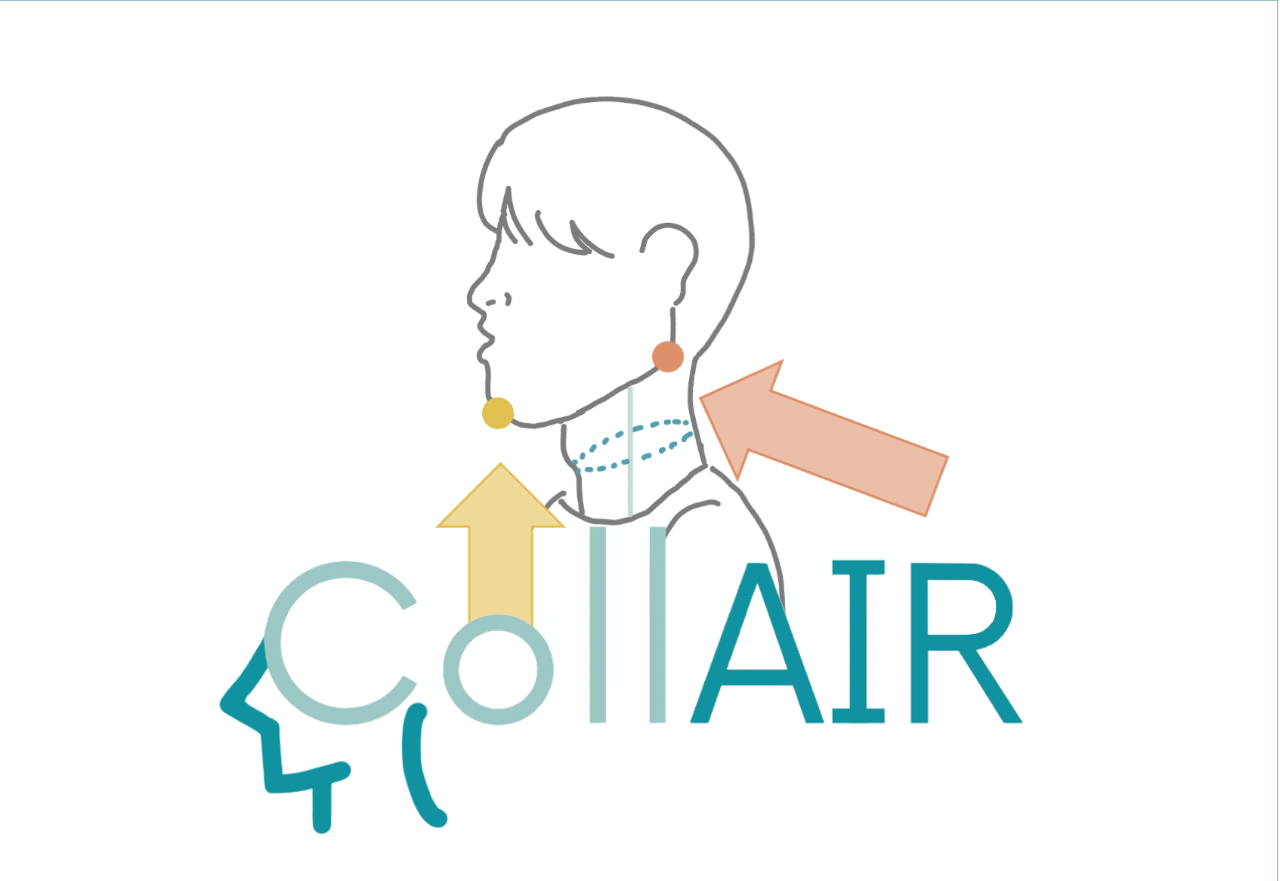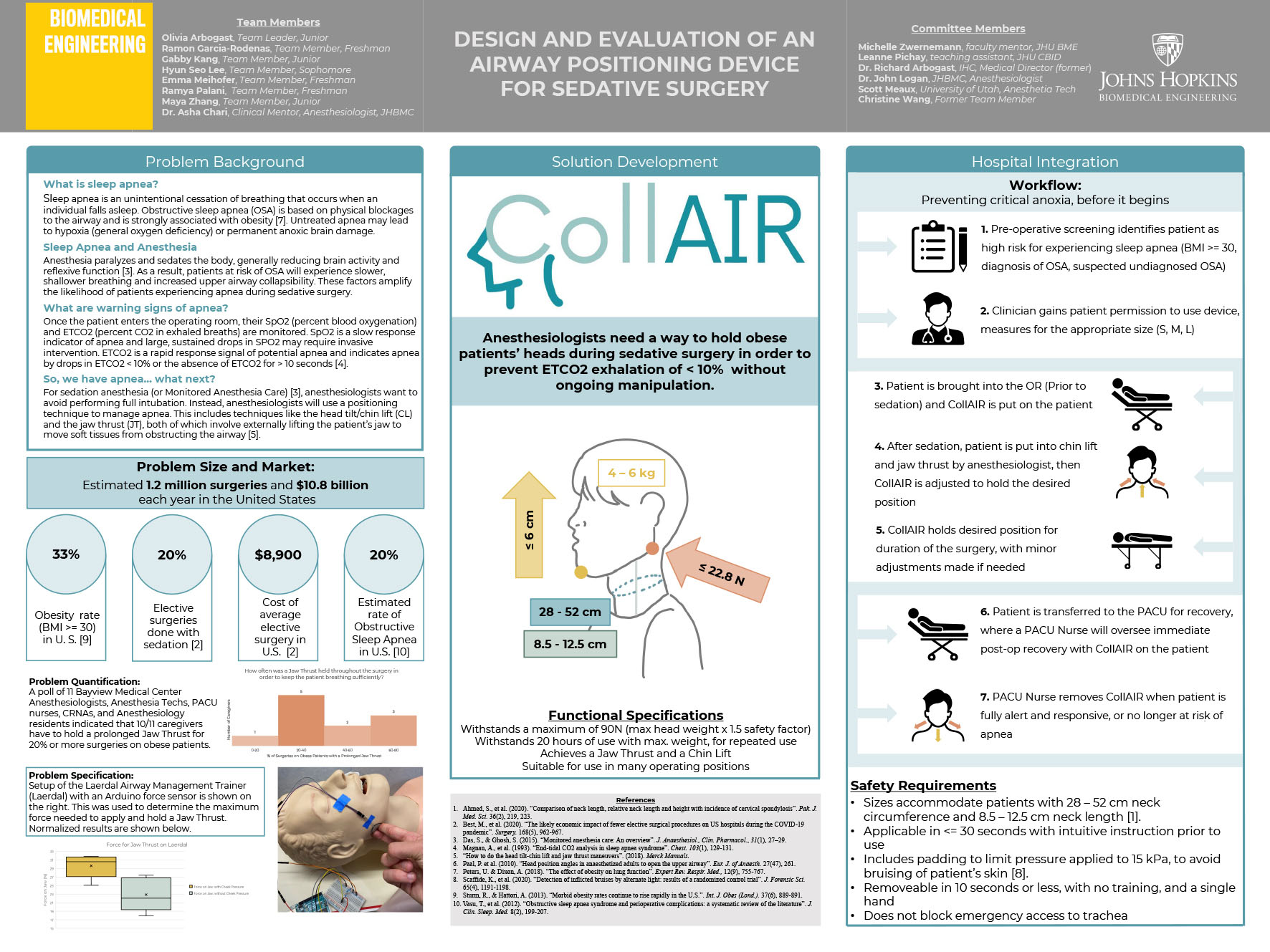CollAIR
- Program: Biomedical Engineering
- Course: BME Undergraduate Design Team
Project Description:
During sedation surgery, patients may have slower, shallower breathing due to
anesthesia’s sedative effects. The combination of the effects of anesthesia and physical characteristics, such as obesity (which may cause physical soft tissue obstruction in the airway), may lead to an increased likelihood of a patient experiencing apnea—the unintentional cessation of breathing. Apnea may be tracked by declines in EtCO2 (end tidal CO2). Anesthesiologists first intervene non-invasively by head positioning, tilting the head upwards in a Chin Lift (CL) and/or by pushing the mandible forward in a Jaw Thrust (JL) to open the airway. The CL or JT must be held continuously, as long as the patient continues to experience apnea, impeding the workflow of anesthesiologists and nurse anesthetists; this strain is often resolved by intubating, causing increased pain for the patient. Anesthesiologists need a way to hold head positioning during sedative surgery in order to prevent ETCO2 exhalation of < 10% without ongoing physical manipulation and avoiding intubation. CollAIR is a cervical collar with supplemental extendable components to adjust the patient's head position. CollAIR is able to tilt the patient’s head by 21±7 ̊ (the anesthetist’s angle), and apply 22 N of force to the mandibular angle, to implement the JT and CL. CollAIR features intuitive velcro attachment for quick removal and optimized padding to distribute force and limit bruising. The CollAIR was tested upon a Prestan CPR Manikin and a Laerdal Airway Management Trainer in order to demonstrate the device's ability to effectively provide a JT and CL throughout a surgery, improving anesthesiologists' efficiency and patient safety & care.
Project Photo:
The project image shows a head facing left with two arrows, a yellow arrow pointing directly up and a red arrow pointing up and left. There is a corresponding yellow dot on the chin and red dot on the mandibular rami of the head. Additionally, there is a blue dotted circle tracing the circumference of the neck. The logo for CollAIR is placed below the head and the arrows.




